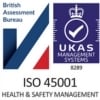In the often complex world of metalworking and manufacturing, die casting is a critical process that engineers and designers use to create a wide variety of metal components. Among the many forms of die casting, Gravity Die Casting and Pressure Die Casting are the most popular. Although they serve the same purpose, the method, application, and output vary considerably.
Gravity Die Casting
Gravity Die Casting, sometimes known as permanent mould casting, is a process that relies on the force of gravity to fill a mould with molten metal. This is poured into the die and allowed to cool, solidifying into the shape required.
One big advantage of this method is its ability to produce less porous components. Since there are no external forces employed to push the molten metal into the die, the finished parts have a higher density and superior strength. Gravity Die Casting offers excellent dimensional accuracy and can be used to cast metals like aluminium, and zinc. However, this method is typically slower and less flexible and may be costlier for larger volumes.
Pressure Die Casting
This method - as its name suggests - involves pressure injection of molten metal into a mould. This process is split into two categories: High Pressure Die Casting (HPDC) and Low Pressure Die Casting (LPDC). The high pressure ensures rapid fill and greater penetration into all the intricate features of the mould, resulting in a highly detailed and accurate product. It's particularly beneficial for high-volume production due to its high speed, reduced waste, and potential for automation. It can cast thinner walls and achieve a smoother finish compared to Gravity Die Casting. One drawback is that pressure cast components can be more porous, leading to reduced strength compared to gravity cast parts. Common metals used in Pressure Die Casting include zinc, aluminium, magnesium, and brass.
To be Clear
Process: Gravity Die Casting uses gravity to fill the mould, while Pressure Die Casting employs pressure to inject the molten metal into the mould.
Speed & Volume: Pressure Die Casting is faster and more suited to large-volume production. Gravity Die Casting is slower but produces stronger components.
Design Complexity: Pressure Die Casting is better for complex designs with intricate features and thinner walls. Gravity Die Casting, although capable of high dimensional accuracy, isn’t as good at handling very complex shapes.
Porosity & Strength: Parts produced through Gravity Die Casting are less porous and, therefore, higher strength. Conversely, pressure-cast parts may have reduced strength.
Cost: Again, it’s a balance we have to look at: Gravity Die Casting may be more cost-effective for smaller production runs due to lower setup costs, but Pressure Die Casting is usually more economical for larger volume. It’s faster and can be automated.
Do pressure die casting and gravity die casting have a difference in quality?
Pressure die casting can make very precise and complex castings achievable. Due to the rapid filling of the mould under pressure, castings are dimensionally accurate with thin walls which are also very smooth, reducing the need for secondary finishing or machining.
Although gravity die casting will not match these benefits, the slower speed at which molten metal enters the mould does mean that less folding and turbulence occurs. As a result, less air is trapped in the casting, offering a distinct advantage if casting integrity is important, or if it needs future heat treatment.
Do Pressure Die Cast Parts and Gravity Die Cast Parts Use Different Materials?
Pressure die cast parts and gravity die cast parts can use similar materials, but some alloys may be better suited for one process over the other.
As high pressure diecasting allows the production of thin wall sections, alloys with good fluidity can maximise this benefit. However, the choice of material depends on the specific requirements of the part - such as strength, corrosion resistance and weight - as well as production process and cost considerations.
Do Pressure Die Cast Parts and Gravity Die Cast Parts Have Different Applications?
Due to the differences in their manufacturing processes and resulting properties, pressure die cast parts and gravity die cast parts often have contrasting end uses.
In general, pressure die casting is preferred for producing more complex or lightweight parts that require tight tolerances and higher production volumes. Gravity die casting is typically used for heavier sectioned parts, orparts that do not require as much precision and can be produced more cost-effectively in smaller quantities.
The choice between the two processes depends on the specific requirements of the project, including part size, complexity, material, and production volume. By speaking to the experts at MRT Castings, we can help you to choose the best process to benefit the final application of your component.
Ready to discuss a casting idea?
MRT Castings are experts with over 75 years’ experience in the manufacture of high-quality aluminium die castings, across a wide range of applications and industries.
As we can see, Gravity Die Casting and Pressure Die Casting have unique strengths and weaknesses. The choice between the two depends on factors such as volume, complexity, strength requirements, and of course, budget. We can help with all your casting questions and guide you through to what’s best for you and your customers.









